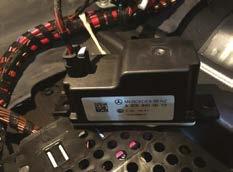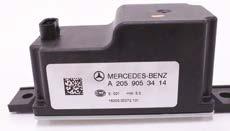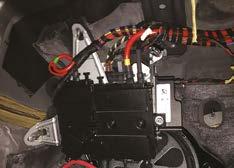
3 minute read
Case study: Mercedes-Benz electrical fault
Case study: Mercedes-Benz C- Class, electrical fault
Opus IVS supports a workshop with an electrical fault malfunction on a Mercedes-Benz W205 chassis
Opus IVS OEM brand-specific Master Technicians support its customers globally via its IVS 360 diagnostic support service, assisting workshops and technicians in the repair of complex vehicle technology.
Using the DrivePro’s diagnostic software and extensive product knowledge, the IVS 360 team provide workshops with the confidence to repair the most complex vehicles with speed and efficiency.
All of the IVS 360 team of OEM-Trained Master Technicians have extensive main dealership workshop experience, which Opus IVS keep up to date through ongoing VM and OEM training. This allows the IVS 360 team to have knowledge of the latest models and systems, enabling them to support customers effectively from initial diagnosis through to final repair.
Mickey Syrota, Mercedes-Benz Master Technician at Opus IVS recently supported a customer with an electrical fault malfunction on a Mercedes-Benz W205.
Using Opus IVS diagnostic software and his extensive brand knowledge, Mickey was able to identify the cause and provide his customer with step-by-step guidance needed to repair the fault.
Vehicle: Mercedes-Benz (C- Class) W205 chassis
Issue: Auxiliary battery malfunction warning message displayed on instrument panel cluster
Fault codes presented: b21dc01
The Cause:
A code read was performed and sent via the customers’ DrivePro device, which revealed the following fault: ‘b21dc01 buffer battery of the EIS malfunction, there is a general electrical fault’.
The most likely cause of an EIS fault code is that one of the power supplies to the EIS switch (Electronic Ignition Switch) is not present. Mickey suggested that the most likely possible cause of a general electrical fault would be a result of the internal c8 capacitor shorting out.
Mickey also explained that the W205 does not have a separate auto start/stop battery, instead it has a current limiter device on the positive terminal of the battery under the bonnet, and that this works in conjunction with the C8 Park Pawl capacitor. Therefore, the cause would most likely be because of no voltage to the ignition switch on the 30b circuit. The voltage converter would therefore need to be inspected and tested along with the C8 Park Pawl capacitor.
The Fix:
The following steps were provided to the customer:
The C8 Park Pawl capacitor is in the N/S/F foot well area. Checks required:
1. At the C8 capacitor pin 2 = red 12v 2. Pin 1 = earth brown 3. Pin 3 = red/blue to EIS switch plug 1 pin 28, 30b voltage
To remove the C8 Park Pawl capacitor, the following guidance was provided:
1. Remove the N/S/F kick panel trim 2. Remove the glove box under dash panel 3. Remove the N/S/F section of carpet 4. Remove the plastic panel on the floor against the bulk head
The C8 Park Pawl capacitor is bolted to the left-hand side of the electrics panel, remove the 8mm nut and lift out the voltage converter. This feeds in to the EIS at plug 1, pin 28 =30b voltage
The voltage supply to the C8 Park Pawl capacitor comes from the rear SAM control unit in the trunk/ boot from fuse 448.
Further remedies supplied:
Mickey further explained that if the C8 capacitor has shorted internally then it is possible that the feed into the EIS at plug, pin 28=30b voltage or additional battery voltage will still be missing after the repair, and still result in the same fault message on the dashboard.

If the voltage converter is replaced, and the fault remains, the following checks would be required:

1. K40/5 f448 (Electrical fuse 448) rear SAM (signal acquisition module) 2. Check electrical lines, connections and connectors for damage, correct connection, loose contact and corrosion, and repair or replace if necessary 3. Check regulator and alternator 4. Additional battery 5. Replace C8 (Park Pawl capacitor).










